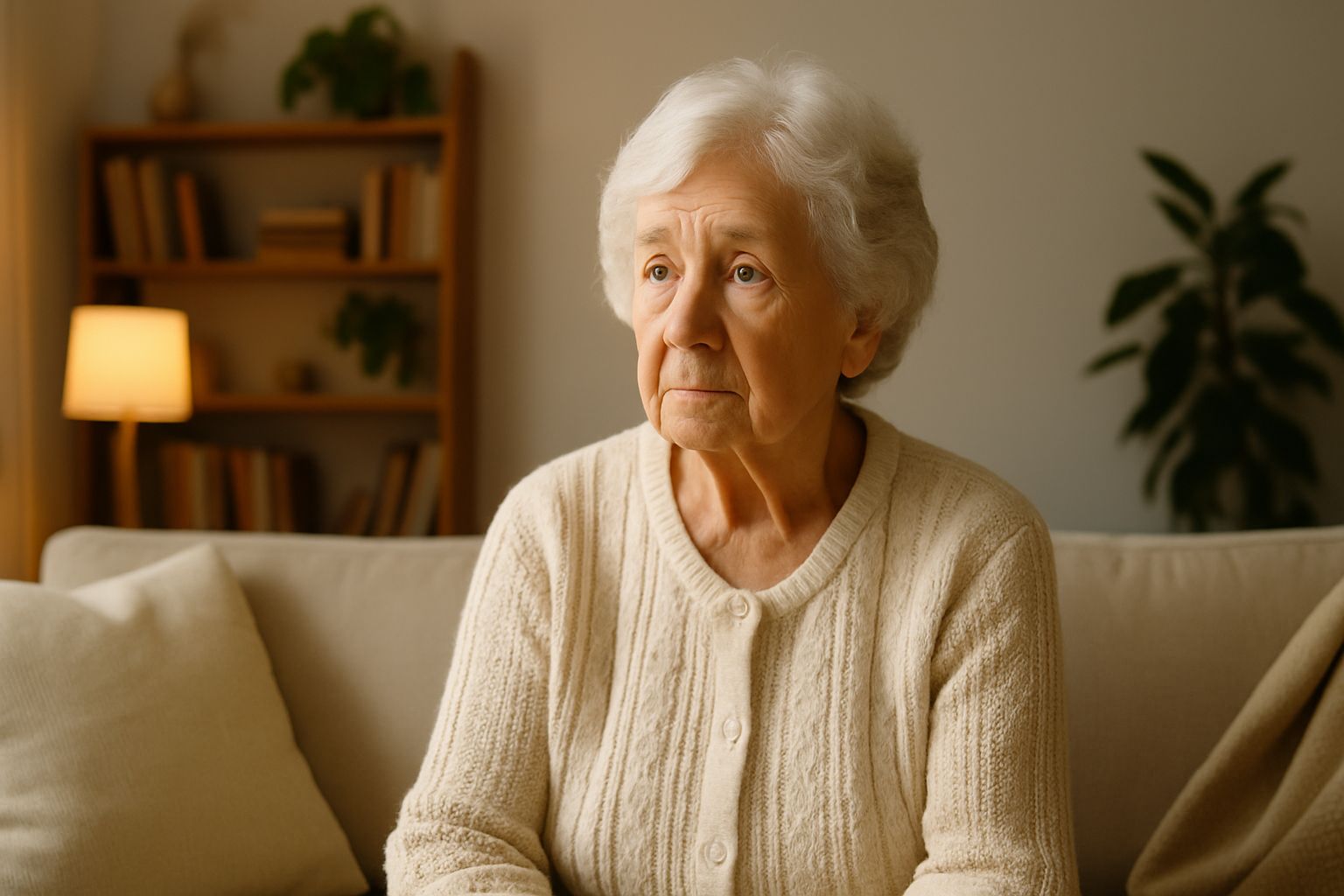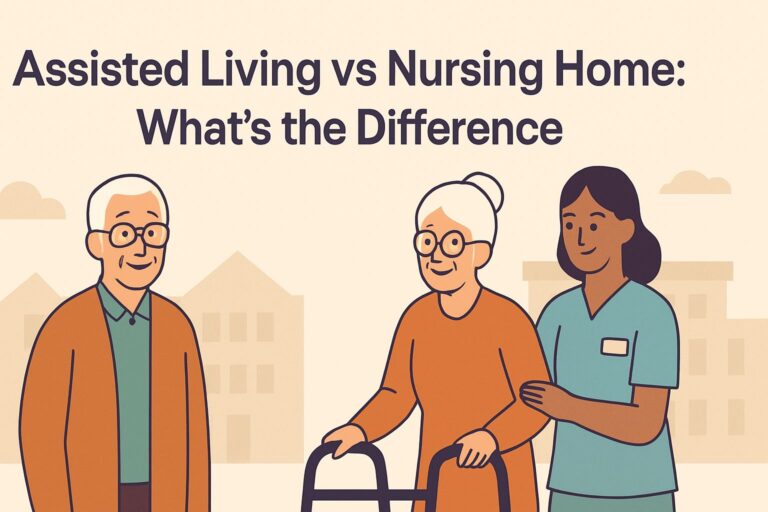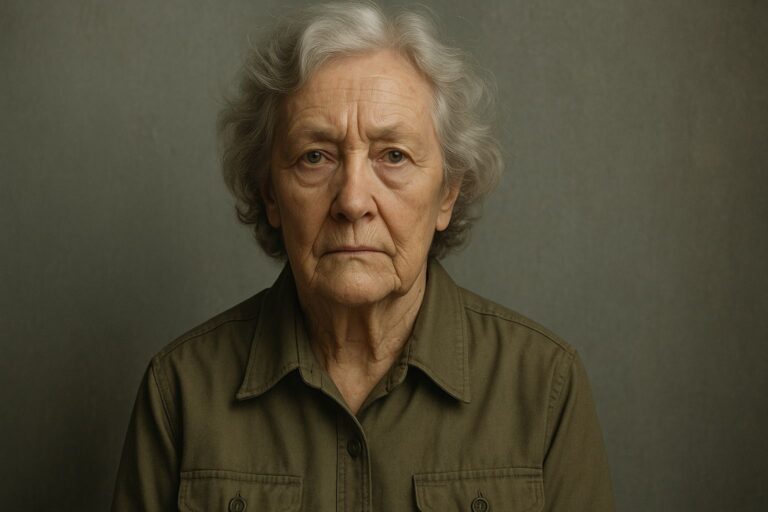What Are the Pros and Cons of Assisted Living (For the Elderly)?
If you’re reading this, there’s a good chance someone you love is starting to need a little more help than they used to — or maybe you are. And that realization can hit like a ton of bricks.
Assisted living isn’t just about medical needs. It’s about lifestyle, safety, dignity, and peace of mind. It’s for the senior who still wants independence but is finding the little things—like managing medication or making dinner—more stressful than they used to be. It’s also for the adult children, the caregivers, who lie awake at night wondering, What if Mom falls again? or Is Dad eating properly?
This guide is here to help you sort through the emotional fog and the information overload. We’re not going to sugarcoat anything. We’ll walk through the real pros and cons of assisted living for the elderly—from daily support and social connection to costs and emotional challenges. I’ll also cover advantages and disadvantages of assisted living, explain who it’s really for, and help you see what your options are—without pressure, and without judgment.
By the end of this guide, you’ll feel more informed, more empowered, and hopefully a bit more at ease.
Let’s begin with the basics: What exactly is assisted living, and how is it different from everything else out there?
What Is Assisted Living (and What It’s Not)
Let’s clear up a common point of confusion. “Assisted living” often gets tossed around alongside terms like nursing home, retirement community, and independent living. But they’re not all the same—and understanding the difference is key to making the right decision. Assisted living is not the same as being in a nursing home.
A Simple Definition
Assisted living is a residential setting designed for older adults who are generally independent but need some help with daily tasks. Think of it as the middle ground between living fully on your own and requiring full-time medical care.
These communities provide:
- Help with activities of daily living (ADLs): bathing, dressing, grooming, eating, toileting, and mobility
- Medication management
- Housekeeping and laundry
- Nutritious meals, often served in a communal dining area
- Social and recreational activities
- 24/7 staff availability for safety and peace of mind
They’re built to feel like home—private apartments, cozy lounges, garden paths—and they prioritize quality of life just as much as safety.
What Assisted Living Is Not
Let’s bust some myths:
- It’s not a nursing home. Nursing homes (also called skilled nursing facilities) are for people who need 24-hour medical care. Assisted living residents don’t need that level of care.
- It’s not independent living. Independent living is designed for healthy, active seniors who just want a low-maintenance lifestyle in a social community. There’s no care assistance involved.
- It’s not memory care. Some assisted living facilities have memory care units for residents with Alzheimer’s or other forms of dementia—but general assisted living doesn’t automatically include this specialized support.
Who Is It Best For?
Assisted living is ideal for someone who:
- Is mostly independent but needs help with one or more daily activities
- Has health conditions that require regular monitoring but not 24-hour nursing care
- Is feeling lonely or isolated and would benefit from community living
- Wants to simplify life and eliminate chores like cooking, cleaning, or home maintenance
- May have experienced a fall, medication mix-up, or other safety concerns at home
If you’re nodding along, you might already know this is the next step. And if not—you’re still right to explore it.
The Real Benefits of Assisted Living: Why Families Choose It
It’s easy to focus on what you might lose when considering assisted living, but many families are surprised by just how much is gained. When done right, assisted living can be a gift—not just to the person moving in, but to the whole family.
Let’s look closely at the advantages that matter most.
1. Daily Support Without Losing Independence
Most older adults don’t want to be “taken care of.” They want to live their life—with just a bit of help where it counts. Assisted living offers support with things like bathing, dressing, or managing medications, but still allows residents to maintain control over their routine, their space, and their time.
It’s the kind of help that lets them keep going, rather than give up.
2. Peace of Mind for Safety and Emergencies
This is a big one. For many families, it’s the fear of an accident—like a fall, a forgotten medication, or a kitchen fire—that sparks the first conversation about assisted living.
In these communities, safety is woven into the fabric:
- Staff are available 24/7 in case of emergency
- Apartments are designed to reduce fall risk
- Emergency call systems are built right into the rooms
You don’t have to lie awake at night wondering, “What if?”
3. Social Life and Community
Loneliness is more than a feeling—it’s a health risk. Assisted living gives older adults a built-in community of peers, with access to shared meals, game nights, movie clubs, walking groups, and celebrations.
Even those who insist, “I’m not a group person,” often come around once they realize how much they’ve been missing simple human connection.
4. No More Housekeeping Headaches
Let’s be honest: chores don’t get easier with age. And the mental load of managing a household—grocery shopping, keeping up with laundry, remembering to pay the electricity bill—can be exhausting.
In assisted living, those tasks are taken off their plate. That means more time for reading, hobbies, visits with grandkids, or just sitting quietly with a cup of tea.
5. Healthy Meals Every Day
Proper nutrition gets trickier as people age. Some lose their appetite, others forget to eat, and many just don’t feel like cooking for one. Assisted living communities provide three balanced meals a day, often with accommodations for dietary needs and preferences.
It’s not just about food—it’s about sharing meals in good company, something many older adults haven’t had in years.
6. Transportation and Accessibility
Driving can become a source of stress—or even danger. Assisted living communities often include scheduled transportation for doctor’s visits, errands, and outings. This helps residents stay connected and independent, even if they’ve stopped driving.
7. A Break for Family Caregivers
If you’ve been caring for a parent or spouse, you know the toll it can take—emotionally, physically, and financially. Assisted living provides much-needed support, giving caregivers time to rest, recharge, and return to being a daughter, a son, or a partner—not a full-time nurse.
The Downsides of Assisted Living: What You Need to Watch Out For
Assisted living can be a wonderful solution—but let’s be clear, it’s not perfect. There are trade-offs, and you deserve to understand them before making such a life-altering decision.
This isn’t about scaring you off. It’s about giving you the full picture, so you can make the choice that’s right for your family.
1. The Cost Can Be Overwhelming
Assisted living isn’t cheap. In many places, the monthly cost ranges from $3,500 to $6,000 or more, depending on location, apartment size, and level of care needed. And it’s not usually covered by Medicare.
What you’re paying for includes housing, meals, 24/7 staffing, and care services—but unexpected fees can pile up:
- Additional charges for medication management
- Extra fees for mobility assistance or memory support
- Rate increases year over year
This is one of the biggest deal-breakers for families, and unfortunately, too many find out too late.
2. Loss of Familiarity and Control
For many older adults, home is more than just walls and a roof. It’s memories. It’s the chair by the window where they had coffee every morning. It’s the smell of their linens, the creak of the hallway floor.
Moving into assisted living means giving up that comfort zone. Even when the new environment is lovely, the emotional toll of leaving home can be profound—and often underestimated.
And with that move comes another change: rules. Mealtimes are scheduled. Visitors may be limited. You might need to press a call button just to get help with a button on your shirt. That sense of independence can take a hit.
3. Inconsistencies in Quality of Care
Not all assisted living communities are created equal.
Some have passionate, well-trained staff who genuinely love their work. Others are understaffed, undertrained, or overworked—especially in lower-cost facilities. This can affect everything from how long it takes to respond to a call bell to how carefully medications are managed.
You can’t assume high standards just because a place looks clean and modern. You’ll need to ask hard questions, visit multiple times, and read reviews with a critical eye.
4. Limited Medical Care
This surprises a lot of people: assisted living communities aren’t medical facilities.
While they may have nurses on staff or visiting healthcare providers, they aren’t equipped to handle serious medical conditions or emergencies the way a nursing home or hospital can. If your loved one’s health declines, a move to a higher level of care may still be necessary.
And every move gets harder with age—emotionally and physically.
5. Adjusting to Communal Living Isn’t Easy for Everyone
Some people thrive in a social environment. Others… don’t.
For someone who’s deeply private, introverted, or used to a quiet life, adjusting to shared dining rooms, group activities, and even having staff come into their space can be uncomfortable. They may struggle to find community—or even just peace and quiet.
6. Risk of Isolation Within the Community
Yes, assisted living is designed to reduce loneliness—but that doesn’t guarantee friendships will form. Some residents isolate themselves due to anxiety, depression, cognitive decline, or just not connecting with others in the community.
It’s a tough truth: loneliness can still happen, even when you’re surrounded by people.
What Are the Pros and Cons of Assisted Living
I know how overwhelming these decisions can feel. Sometimes you just want someone to sit beside you, lay it all out on the table, and say, “Here’s what you’re really looking at.” So that’s exactly what we’re going to do.
Over the years, I’ve seen families wrestle with every angle of assisted living—what it offers, what it costs, and what it means for the people they love. No sugarcoating. No pressure. Just an honest look at the trade-offs.
Here’s a side-by-side comparison of the pros and cons to help you think things through with clarity—and compassion.
| Category | Pros | Cons |
|---|---|---|
| Daily Support | Help with bathing, dressing, medication, and mobility when needed | May feel like a loss of independence to rely on others |
| Safety & Emergency Care | 24/7 staff availability, emergency call systems, fall prevention | Care quality and response times can vary by facility |
| Community & Social Life | Organized activities, companionship, communal meals | Some residents may still feel isolated or have difficulty socializing |
| Freedom from Chores | No housekeeping, cooking, or home maintenance responsibilities | Set schedules may feel restrictive for some individuals |
| Nutrition | Regular, balanced meals with dietary accommodations | Less control over meal times and food selection |
| Healthcare Access | On-site support and coordination with medical providers | Not equipped for complex or high-level medical care |
| Transportation | Scheduled transport for errands and appointments | Limited to set times and may not meet all mobility needs |
| Peace of Mind | Reduced worry for families about accidents or neglect at home | Guilt or sadness about moving a loved one out of their home |
| Predictable Lifestyle | Structured environment, routine activities, and staff support | Can feel overly structured or institutional to more independent seniors |
| Financial Impact | All-inclusive costs simplify budgeting | Monthly fees are high; often not covered by Medicare or insurance |
| Long-Term Viability | Ideal for moderate care needs and gradual transitions | May require another move if care needs escalate (e.g., memory care) |
Making the Right Choice: How to Decide If Assisted Living Is the Right Fit
There’s no magic formula for knowing when it’s time. Some families wait until there’s a crisis—a fall, a hospital stay, a medication scare. Others start the conversation early, planning ahead while options are still wide open.
Whatever brings you here, let’s slow things down and walk through the decision-making process together.
1. Start with an Honest Assessment of Needs
This step can’t be skipped. And it needs to be more than just, “Is Mom forgetful?” or “Is Dad getting frail?” You need to look at all areas of life:
- Can they manage activities of daily living (bathing, dressing, eating, toileting, mobility)?
- Are they remembering to take medications correctly?
- Are they eating regular, nutritious meals—or skipping them?
- Is their home safe, clean, and functional?
- Are they isolated or showing signs of depression?
- Are chronic conditions being monitored properly?
If the answers raise red flags, assisted living might not just be helpful—it might be essential.
2. Talk About It Early (and Often)
This is where many families hit a wall.
Seniors often fear being “put away” or losing control. Adult children worry about offending their parents or stirring up guilt. But this conversation isn’t about taking anything away—it’s about making sure needs are met with dignity.
Start by asking open, loving questions. For example:
- “How are things going around the house these days?”
- “Have you ever thought about what kind of help you might want in the future?”
- “Would you ever want to live somewhere with people your age and less to worry about?”
Listen more than you talk. Let it be a discussion, not a decision handed down.
3. Tour Communities Before You Need To
It’s hard to make a good choice in a crisis. Touring assisted living communities before there’s urgency allows you to:
- Compare options
- Ask detailed questions
- Meet staff and residents
- Check for cleanliness, friendliness, and safety
- Get a feel for the environment
Bring a checklist. Take notes. Eat a meal there if you can. You’re not just buying services—you’re choosing a lifestyle.
4. Consider Finances Early and Realistically
No one wants to talk about money, but this decision can’t be made responsibly without it.
Sit down with a financial planner or elder law attorney if needed. Ask:
- What’s the current monthly cost of living at home?
- What will assisted living cost per month, including add-ons?
- How long can current savings or income cover it?
- Are there benefits (like Veterans Aid & Attendance) or long-term care insurance that might help?
You’ll need clarity before you commit. The goal is comfort, not financial strain.
5. Involve Medical Providers and Trusted Advisors
Your loved one’s doctor may have insight into what level of care is needed now—or may be needed soon. Sometimes, the input of a third party helps take the emotion out of the decision.
Pastors, social workers, or family friends with experience in elder care can also offer valuable perspective and encouragement.
6. Make the Decision as a Family—If You Can
Not every family agrees. Siblings argue. Spouses struggle. But when possible, include everyone who cares about the outcome.
Shared understanding reduces resentment and helps everyone rally around the loved one making the move. Remember, it’s not about what you would want—it’s about what they need and what will work long-term.
Exploring Alternatives: What If Assisted Living Isn’t the Answer?
I’ve sat at enough kitchen tables and walked through enough living rooms to know this: no two families are the same. And no single solution works for everyone. Sometimes, the idea of assisted living just doesn’t sit right—and that’s okay. You’re not boxed in.
Let’s look at some of the most meaningful alternatives, with all their trade-offs and possibilities, through the eyes of someone who’s walked this path with hundreds of families before.
Aging in Place: Staying Home with a Safety Net
For many older adults, there’s a deep emotional connection to their home. It’s where they raised kids, buried pets under the tree out back, and made 3 a.m. tea when sleep wouldn’t come. Leaving that behind? It’s a kind of grief.
If your loved one is determined to stay put—and their care needs aren’t too complex yet—aging in place might be the most loving option.
But it can’t be left to chance. You’ll need a solid plan:
- Reliable in-home care for bathing, grooming, or medication reminders
- Home modifications like grab bars, walk-in tubs, and stair lifts
- A support network of neighbors, friends, or hired help who can check in
- Meals, housekeeping, and transportation options arranged ahead of time
It takes coordination, commitment, and usually money—but when it works, it allows your loved one to stay in the home they love, safely and with dignity.
Independent Living: No Chores, No Caregiving
Don’t confuse this with assisted living—it’s a whole different world.
Independent living is for seniors who don’t need hands-on help, but are tired of mowing the lawn, cooking solo, and managing a house that’s too big for their current life.
It’s ideal for those who are still active, mobile, and mentally sharp—but craving community and convenience. Meals are served, maintenance is handled, and activities are just down the hall.
The catch? If their needs grow, they’ll have to move again. So think of this as a stepping stone, not a final landing place.
Continuing Care Retirement Communities (CCRCs): Planning for the Long Road Ahead
Now here’s an option for the long-game thinkers.
In a CCRC, your loved one starts out in independent living, then transitions seamlessly to assisted living or nursing care as needs change—all without leaving the community.
It’s like setting down roots in a place that can evolve with you.
I’ll be honest—these places often require a big financial investment up front, and not everyone qualifies. But for those who can afford it, they offer stability, predictability, and peace of mind. I’ve seen residents thrive here, knowing they’ll never be a burden and never have to move again.
Memory Care: When Dementia Changes the Equation
If your loved one has Alzheimer’s or another form of dementia, assisted living may not go far enough.
Memory care facilities are built specifically for people with cognitive decline. They’re safe, secure, and structured. Staff are trained in redirecting behavior, soothing anxiety, and preventing wandering.
This isn’t about taking control away—it’s about protecting someone whose mind no longer gives them all the tools they need.
I’ve cried with daughters who’ve had to make this choice. It’s never easy. But when the time comes, the right memory care community can offer not just safety—but dignity.
Co-Housing and Home Sharing: Creative Paths to Companionship
Not every elder wants a traditional setting. I’ve met widows in their seventies who move in with lifelong friends, and older bachelors who rent a room to a younger caregiver in exchange for light support.
These arrangements aren’t for everyone—but when they work, they offer something truly special: mutual respect, shared responsibilities, and human connection.
Think of it as the golden years reimagined. A little unconventional, yes—but deeply personal and often surprisingly joyful.
Conclusion: What Matters Most in the End
You’ve made it this far, and if your heart feels a little heavy right now, that’s completely normal. This kind of decision—where someone lives, how they’re cared for, what life looks like moving forward—it’s never just practical. It’s deeply personal.
I’ve walked alongside sons who didn’t know how to tell their mothers it was time. I’ve sat with wives torn between honoring a promise to keep their husband home and the painful reality that she couldn’t do it alone anymore. I’ve seen guilt, fear, love, and courage wrapped up in the same breath.
So let’s pause and remember something simple but important: this is about doing the best you can with the information, resources, and heart you have today.
You’re not failing anyone by considering assisted living. You’re not giving up. You’re adapting. You’re responding to changing needs in a way that prioritizes safety, connection, and quality of life.
And maybe that’s what matters most.
Whether you choose assisted living, aging in place, a shared home, or something entirely different, the goal is the same: to honor the dignity of someone you love—and to find peace in the choice you’ve made.
Here’s what I want you to take with you:
- Get clear about what your loved one needs—not just now, but six months or a year from now.
- Talk about it, even when it’s hard. Especially when it’s hard.
- Ask questions. Tour places. Read reviews. Don’t be afraid to walk away from a place that doesn’t feel right.
- Plan ahead for money, time, and your own emotional bandwidth.
- And through it all, remember that the right choice is the one that lets your loved one live with grace—and lets you sleep at night knowing you did what you could.
You’re not alone in this. And you don’t have to do it perfectly. You just have to do it with love.
That’s always been enough.
Share This Article:






